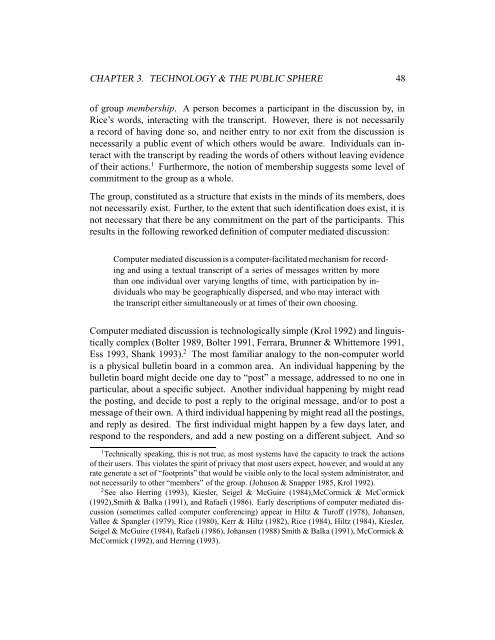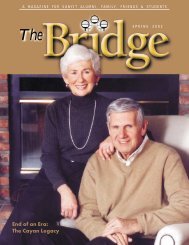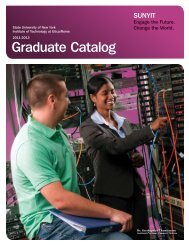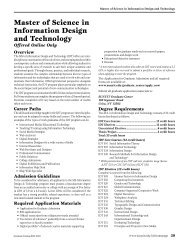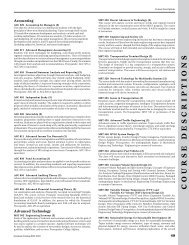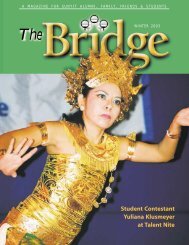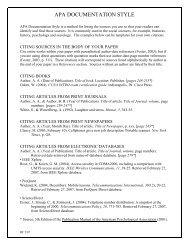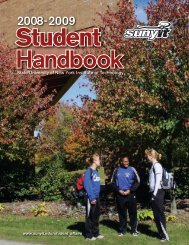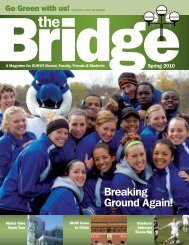Expanding the Public Sphere through Computer ... - ResearchGate
Expanding the Public Sphere through Computer ... - ResearchGate
Expanding the Public Sphere through Computer ... - ResearchGate
You also want an ePaper? Increase the reach of your titles
YUMPU automatically turns print PDFs into web optimized ePapers that Google loves.
CHAPTER 3. TECHNOLOGY & THE PUBLIC SPHERE 48<br />
of group membership. A person becomes a participant in <strong>the</strong> discussion by, in<br />
Rice’s words, interacting with <strong>the</strong> transcript. However, <strong>the</strong>re is not necessarily<br />
a record of having done so, and nei<strong>the</strong>r entry to nor exit from <strong>the</strong> discussion is<br />
necessarily a public event of which o<strong>the</strong>rs would be aware. Individuals can interact<br />
with <strong>the</strong> transcript by reading <strong>the</strong> words of o<strong>the</strong>rs without leaving evidence<br />
of <strong>the</strong>ir actions. 1 Fur<strong>the</strong>rmore, <strong>the</strong> notion of membership suggests some level of<br />
commitment to <strong>the</strong> group as a whole.<br />
The group, constituted as a structure that exists in <strong>the</strong> minds of its members, does<br />
not necessarily exist. Fur<strong>the</strong>r, to <strong>the</strong> extent that such identification does exist, it is<br />
not necessary that <strong>the</strong>re be any commitment on <strong>the</strong> part of <strong>the</strong> participants. This<br />
results in <strong>the</strong> following reworked definition of computer mediated discussion:<br />
<strong>Computer</strong> mediated discussion is a computer-facilitated mechanism for recording<br />
and using a textual transcript of a series of messages written by more<br />
than one individual over varying lengths of time, with participation by individuals<br />
who may be geographically dispersed, and who may interact with<br />
<strong>the</strong> transcript ei<strong>the</strong>r simultaneously or at times of <strong>the</strong>ir own choosing.<br />
<strong>Computer</strong> mediated discussion is technologically simple (Krol 1992) and linguistically<br />
complex (Bolter 1989, Bolter 1991, Ferrara, Brunner & Whittemore 1991,<br />
Ess 1993, Shank 1993). 2 The most familiar analogy to <strong>the</strong> non-computer world<br />
is a physical bulletin board in a common area. An individual happening by <strong>the</strong><br />
bulletin board might decide one day to “post” a message, addressed to no one in<br />
particular, about a specific subject. Ano<strong>the</strong>r individual happening by might read<br />
<strong>the</strong> posting, and decide to post a reply to <strong>the</strong> original message, and/or to post a<br />
message of <strong>the</strong>ir own. A third individual happening by might read all <strong>the</strong> postings,<br />
and reply as desired. The first individual might happen by a few days later, and<br />
respond to <strong>the</strong> responders, and add a new posting on a different subject. And so<br />
1 Technically speaking, this is not true, as most systems have <strong>the</strong> capacity to track <strong>the</strong> actions<br />
of <strong>the</strong>ir users. This violates <strong>the</strong> spirit of privacy that most users expect, however, and would at any<br />
rate generate a set of “footprints” that would be visible only to <strong>the</strong> local system administrator, and<br />
not necessarily to o<strong>the</strong>r “members” of <strong>the</strong> group. (Johnson & Snapper 1985, Krol 1992).<br />
2 See also Herring (1993), Kiesler, Seigel & McGuire (1984),McCormick & McCormick<br />
(1992),Smith & Balka (1991), and Rafaeli (1986). Early descriptions of computer mediated discussion<br />
(sometimes called computer conferencing) appear in Hiltz & Turoff (1978), Johansen,<br />
Vallee & Spangler (1979), Rice (1980), Kerr & Hiltz (1982), Rice (1984), Hiltz (1984), Kiesler,<br />
Seigel & McGuire (1984), Rafaeli (1986), Johansen (1988) Smith & Balka (1991), McCormick &<br />
McCormick (1992), and Herring (1993).


